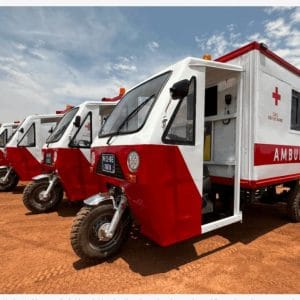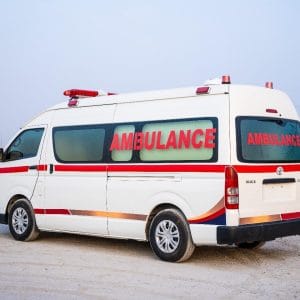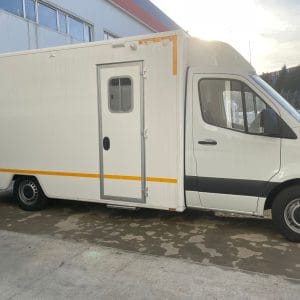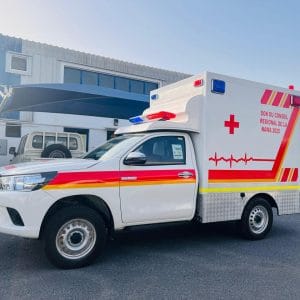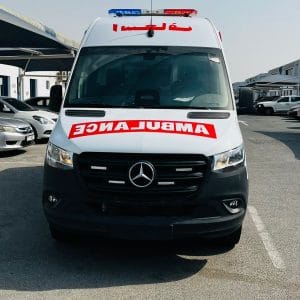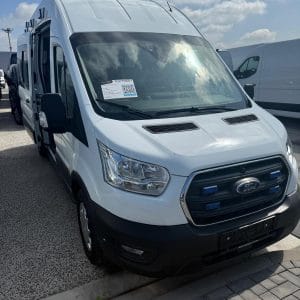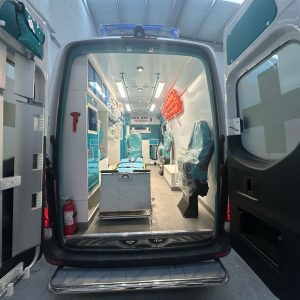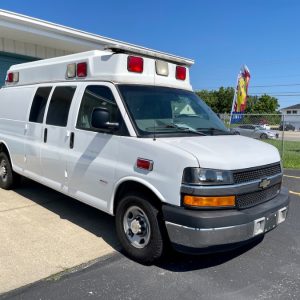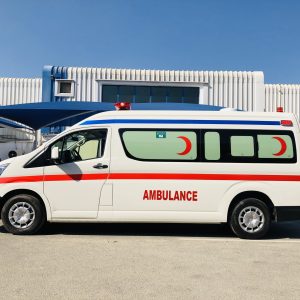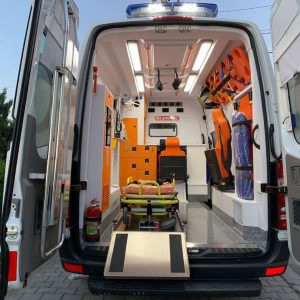SAMU Full Technical Specification; The procurement of ambulances for a Service d’Aide Médicale Urgente (SAMU) is not a simple vehicle purchase; it is the acquisition of a mobile critical care unit. The technical specifications document, such as RFQ15960825 LOT 1 for SAMU Mauritania, serves as the definitive blueprint for quality, safety, and performance. For authorities and tender committees, ensuring 100% compliance with this document is paramount. It guarantees that the deployed fleet of 4×4 intensive care (SVA) and emergency care (SVB) ambulances will perform reliably in the most demanding conditions, providing doctors and nurses with the tools they need to save lives. This article outlines the core areas of compliance that manufacturers must meet to fulfill the stringent requirements of a SAMU tender.
1. Base Vehicle Compliance: The Foundation of Reliability
The foundation of any compliant SAMU ambulance is a base vehicle that exceeds standard demands. The RFQ15960825 specifications mandate a robust platform capable of off-road operation and supporting heavy medical modules.
- Chassis and Drivetrain: Compliance requires a 4×4 (integral transmission) chassis with a reinforced front axle, reinforced suspension, and a single rear axle. The vehicle must have an authorized maximum mass exceeding 4,000 kg to accommodate the medical cell and equipment.
- Engine and Performance: The engine must be a Euro VI compliant diesel with a displacement over 1,900 cm³ and power exceeding 120 hp. A 7-speed automatic gearbox is non-negotiable to reduce breakdowns and driver fatigue.
- Dimensions and Safety: Strict dimensional tolerances (±5%) must be adhered to, including a wheelbase of 3,665 mm and an overall length of 5,932 mm. Dual front airbags, central locking, and electric windows are mandatory for crew safety.
2. The Medical Cell (Sanitary Cell): A Sterile, Secure, and Functional Environment
The medical cell is the heart of the ambulance. Compliance here is detailed and critical for both patient care and staff safety.
- Structural Integrity: The cell must be constructed with impermeable lower lining with all edges sealed to prevent fluid infiltration, allowing for easy disinfection. Junctions with doors must use aluminum.
- Technical Floor System: A pivotal compliance point is the 25-30 mm thick technical floor with integrated recessed aircraft-type mounting rails. All furniture, seats, and equipment must be anchored to these rails using high-strength aircraft-grade screws, not directly to the floor. This ensures nothing becomes a projectile during transport.
- Layout and Furniture: The layout is dictated by SAMU. It must include three certified, foldable, and swivel seats with three-point belts. All cabinets must be closed or have shutters to secure equipment. The cell must be equipped with ceiling rails for personnel support and a device for securely hanging four infusion bags.
- Climate Control: An independent, ceiling-mounted air conditioning system for the medical cell is required. It must provide 8,600 frigories of cooling capacity, achieve a minimum of 20 air changes per hour when stationary, and operate continuously whether the engine is running or the vehicle is plugged into mains power.
3. Electrical System: Uninterrupted Power for Critical Care
A fault-tolerant and robust electrical system is the nervous system of the ambulance.
- Power Generation and Storage: Compliance mandates a 180 Ah alternator and a second AGM battery (min. 95 Ah) with an isolating relay and automatic separator. This ensures power for all medical devices even with the engine off.
- Circuit Management: The system must have multiple independent circuits with individual overload protection to maintain functionality if one circuit fails. All wiring must be clearly marked and resistant to vibration.
- Power Outlets: The vehicle must be equipped with six interior 12V sockets and six interior 220V sockets on independent circuits. A 2000W inverter (12V to 220V) controllable from the driver’s cabin is essential.
- External Power: An auto-ejecting external 220V socket with a red indicator light on the driver’s door is required for safe operation at a station.
4. Specialized Medical Equipment and Oxygen Therapy
This is where the vehicle transitions from transport to a mobile ICU.
- Oxygen Therapy System: A complex, dual-circuit system is required. It must include:
- 2 hooks for 10L bottles and 2 hooks for 2L bottles.
- An automatic bottle exchanger to switch seamlessly when one bottle is empty.
- 7 oxygen outlets, 1 Venturi suction nozzle, and 1 fixed electric suction system.
- 2 pressure regulators and a display for real-time bottle level monitoring.
- 2 individual flow meters and 1 dual-flow meter unit (all without humidifiers).
- Stretcher System: The specifications call for a sophisticated electropneumatic stretcher table (12V) with a 500 kg load capacity. It must allow for height adjustment and lateral translation for easy patient transfer. The accompanying lightweight aluminum loading system must accommodate stretchers from 2,000 mm to 2,709 mm in length.
- Refrigeration: A refrigerator and serum warmer permanently connected to both 12V and 220V power sources are mandatory.
5. Lighting, Communication, and Safety Systems
These systems ensure the ambulance can respond safely and the team can work effectively.
- Emergency Lighting: Compliance involves a extensive and specific LED light package as per SAMU Mauritania’s visual identity. This includes a roof fairing with at least 22 nano-LEDs on the front, a minimum of 48 nano-LEDs on the sides, and various other nano-LEDs and spotlights on the front, rear, and wings.
- Internal Lighting: The medical cell lighting must provide 300 lux in the patient area and 50 lux in the periphery, using dimmable LED strips.
- Communication and Monitoring: An intercom system between the driver’s cabin and medical cell is required. Furthermore, a closed-circuit video system with audio must allow the driver to continuously monitor the patient.
- Siren: A 100W electronic fire/ambulance siren with a day/night attenuator is specified.
Conclusion: Compliance is Non-Negotiable
For a government or health authority issuing a tender like RFQ15960825 LOT 1, accepting anything less than full technical compliance jeopardizes patient outcomes, crew safety, and operational efficiency. The specifications are meticulously crafted to create a life-saving tool, not just a vehicle. Therefore, partnering with a manufacturer that demonstrates a meticulous, detail-oriented approach to meeting every single requirement—from the thickness of the technical floor to the precise number of nano-LEDs—is the only way to ensure a successful procurement that will serve the population effectively for years to come. The ultimate goal is to deploy a fleet of ambulances that allows medical teams to work in the “best possible conditions,” turning a vehicle into a beacon of hope and advanced medical care.



